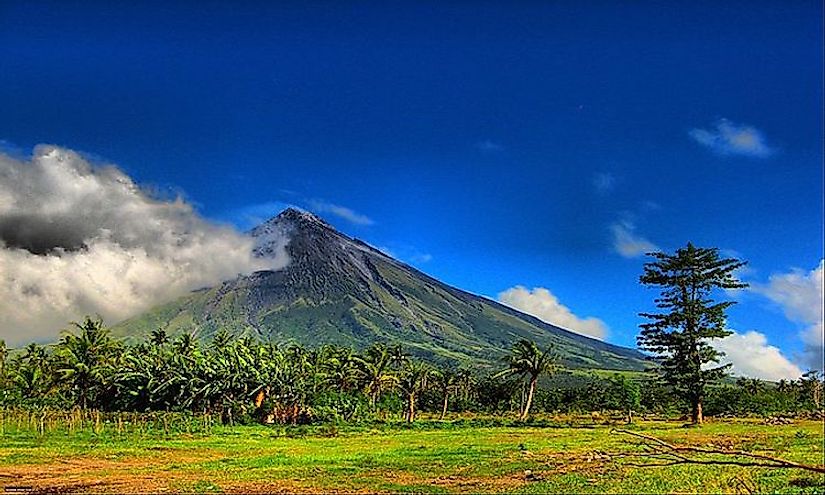Ecological Regions Of The Philippines

Most of the Philippine Archipelago is covered with tropical deciduous forests receiving high levels of precipitation. Comprised of more than 700 islands, the Philippine archipelago is teeming with biodiversity and endemic species due to years of isolation from mainland Asia.
Ecological Regions Of The Philippines
Luzon Rain Forests

The Luzon Rain Forests ecoregion is classified in the Tropical and Subtropical Moist Broadleaf Forests Biome. The Luzon Rain Forests ecoregion is situated in Luzon Island, which is the largest island in the Philippines. This ecoregion is made up of the lowlands areas of below 1,000 m of Luzon and some volcanic mountains above 1,000m. These mountains are Mt. Banashaw, Mt. Maquiling, Mayon Volcano, Mt. Isarog and Bulusan Volcano.
Temperatures in the lowlands range between 25-28 degrees Celsius. The lowland is characterized by tall dipterocarp trees and buttresses. The undergrowth is comprised of ferns, orchids, lianas, and rattans. Much of the forest in the lowlands has been cleared through deforestation. Rainfall in the mountains reaches as high as 10,000 mm annually. Oak trees dominate the higher elevations, which are shorter in stature and support less undergrowth than those in the lowlands. The ecoregion is home to 5 endemic mammals and ten near-endemic mammal species. The Luzon shrew mouse, southern Luzon giant cloud rat, Philippine warty pig, and the Isarog striped shrew-rat are some of the fauna found in the region.
The ecoregion is listed as Critically Endangered with logging, hunting and encroaching agricultural practices as significant threats. The Mt. Isarog National Park and the Quirino Protected Landscape are some of the major conservation habitats in the region.
Luzon Montane Forests
The Luzon Montane Forests ecoregion is classified in the Tropical and Subtropical Moist Broadleaf Forests Biome. The ecoregion covers the high elevations of some Luzon’s mountain ranges such as the Northern and Southern Sierra Madre and the Zambales Mountains. The amount of rainfall varies with the mountain ranges and can be as high as 10,000 mm in some areas.
The montane forests are dominated by oak and laurel tree species with little undergrowth. The ecoregion supports abundant fauna, including the endemic Palanan shrew mouse. The long-nosed Luzon forest mouse, Luzon pygmy fruit bat, Philippine brown deer are some of the animals found in the region alongside bird species including Luzon buttonquail and the whiskered pittas.
The ecoregion has been listed as Critically Endangered and faces environmental threats from the land transformation, logging, hunting, mining, and infrastructure development. The Northern Sierra Madre National Park is the largest of all conservation efforts in the ecoregion.
Luzon Tropical Pine Forests

The Luzon Tropical Pine Forests is classified in the Tropical and Subtropical Coniferous Forests Biome. This ecoregion covers the Central Cordillera Mountain Range in the northwestern part of Luzon. The ecoregion lies within all areas above 1,000 meters in this region, excluding a large expanse of montane forest situated on the northern end. Included in this ecoregion are high peaks such as Mt. Data, Mt. Puguis, and Mt. Pulog. Annual rainfall and annual temperature average at an estimated 2,500 mm and 20 degrees Celsius respectively. The region is characterized by grassland, the Benguet pine or Saleng tree species and montane forests. Fauna found in the area include Cloud rats, Philippine warty pig, Malayan civet, and the long-tailed macaque. Land transformation, fires, logging, and mining projects continue to threaten the region’s sustainability. The major conservation area is Mt. Pulog which is home to several threatened birds and endemic plant species.
Mindoro Rain Forests

The Mindoro Rain Forests is classified in the Tropical and Subtropical Moist Broadleaf Forests Biome. The ecoregion is situated on the island of Mindoro and has a tropical wet climate. Lowland evergreen forests, open forests and mossy forests are in rising elevations. A small expanse of Mindoro Pine is present in the northern region. The ecoregion is home to the rare tamaraw Buffalo, the Philippine warty pig, cloud rat, and the Philippine deer. Logging, poaching, and agricultural activities are the major threats to this ecoregion. The major conservation areas in the region are the Mounts Iglit-Baco and Mount Apo National Parks.
Ecological Threats
Other ecoregions in the Philippines are Eastern Visayas and Mindanao Rain Forests; Mindanao Montane Rain Forests; Palawan Rain Forests; Panay and Negros Rain Forests; South China Sea Island Forests and Sulu Archipelago Rain Forests. Development projects and human activities are significant threats to the unique ecoregions of the Philippines. The Philippines, like most developing countries, is always seeking a balance between economic development and environmental sustainability.
Ecological Regions Of The Philippines
| Ecological Regions Of The Philippines | Biome |
| Eastern Visayas and Mindanao Rain Forests | Tropical and Subtropical Moist Broadleaf Forests |
| Luzon Montane Rain Forests | Tropical and Subtropical Moist Broadleaf Forests |
| Luzon Rain Forests | Tropical and Subtropical Moist Broadleaf Forests |
| Luzon Tropical Pine Forests | Tropical and Subtropical Coniferous Forests |
| Mindanao Montane Rain Forests | Tropical and Subtropical Moist Broadleaf Forests |
| Mindoro Rain Forests | Tropical and Subtropical Moist Broadleaf Forests |
| Palawan Rain Forests | Tropical and Subtropical Moist Broadleaf Forests |
| Panay and Negros Rain Forests | Tropical and Subtropical Moist Broadleaf Forests |
| South China Sea Island Forests | Tropical and Subtropical Moist Broadleaf Forests |
| Sulu Archipelago Rain Forests | Tropical and Subtropical Moist Broadleaf Forests |











